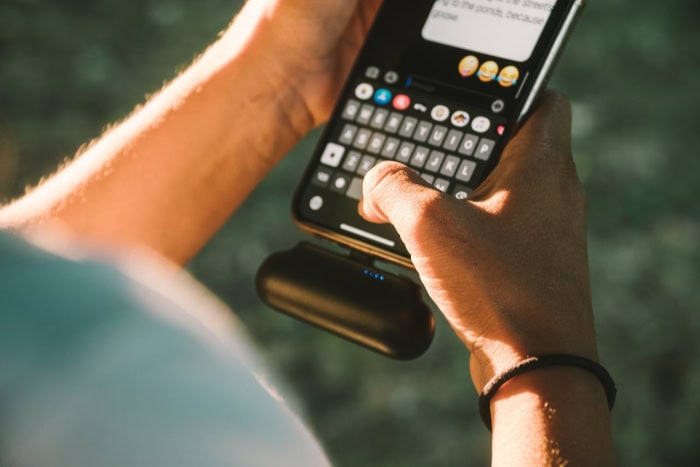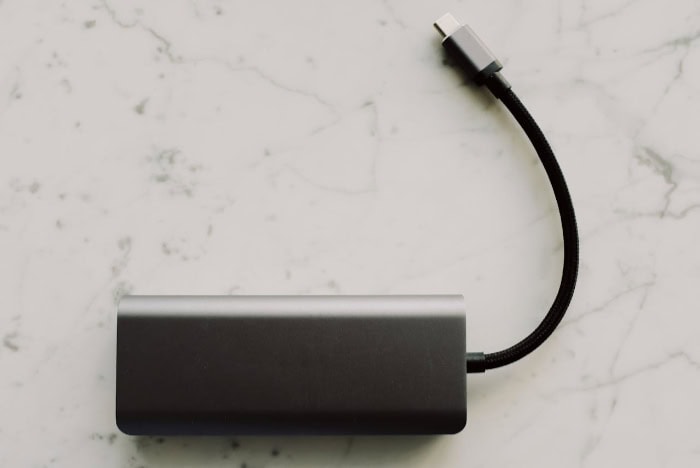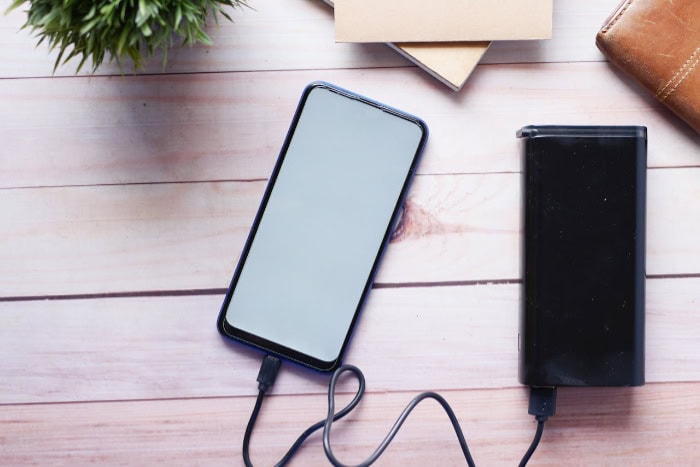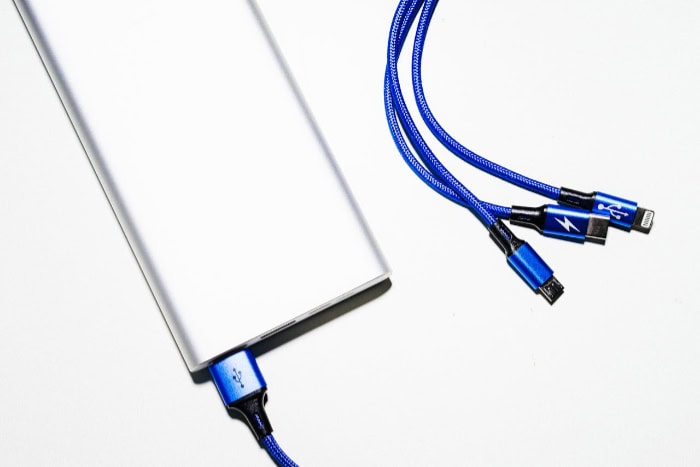Are Power Banks Worth It? Facts About Portable Charging

Picture yourself in a situation where your smartphone's battery is running low, and you're nowhere near a power outlet. It could be during a long flight, a camping trip, or a crucial business meeting.
This is a common scenario that many of us have faced, and it highlights the importance of having a reliable backup power source. Enter power banks – the portable charging devices that have become increasingly popular in recent years.
These handy gadgets promise to keep our devices powered up when we need them most, but with so many options flooding the market, it's natural to question whether they're a worthwhile investment.
Cost-Benefit Analysis
When considering the purchase of a power bank, it's essential to weigh the costs against the potential benefits. While the initial investment may seem daunting, power banks can offer significant value in terms of convenience, productivity, and peace of mind.
Initial Investment
Power banks come in a wide range of capacities, from compact 5,000mAh units to massive 30,000mAh and beyond. As a general rule, the higher the capacity, the higher the price tag.
Entry-level power banks with smaller capacities can cost as little as $10 to $20, while high-end models with larger capacities and advanced features can set you back $50 to $100 or more.
When considering the cost, it's crucial to strike a balance between quality and affordability. While it may be tempting to opt for the cheapest option available, investing in a well-constructed power bank from a reputable brand can ensure better performance, safety, and longevity.
Additionally, a higher-quality power bank may offer more efficient charging, faster charging speeds, and better compatibility with your devices.
It's also worth noting that investing in a power bank can lead to long-term savings. By having a reliable backup power source, you can avoid the need to constantly search for power outlets or pay for charging services at airports, cafes, or other public spaces.
Over time, these small savings can add up, making the initial investment in a power bank more worthwhile.
Value Proposition
Beyond the financial considerations, power banks offer a range of benefits that can greatly enhance your mobile experience. One of the most significant advantages is the ability to provide emergency power when you need it most.
Whether you're caught with a dead battery during an important call, navigating an unfamiliar city, or capturing a once-in-a-lifetime moment, a power bank can be a lifesaver.
For frequent travelers, power banks are an indispensable companion. Long flights, layovers, and days spent exploring new destinations can quickly drain your device's battery.
With a power bank in your bag, you can keep your smartphone, tablet, or laptop charged and ready to use, ensuring that you stay connected and productive throughout your journey.
In professional settings, power banks can be a game-changer. From sales representatives who rely on their devices to close deals to photographers who need to keep their cameras powered up during long shoots, having a backup power source can mean the difference between success and failure.
Technical Specifications

To make an informed choice when purchasing a power bank, it's crucial to grasp the technical aspects that influence its performance. Many brands, such as Anker, have set high standards in portable charging technology, offering innovative solutions that cater to diverse user needs.
These manufacturers have developed power banks with advanced features that go beyond basic charging capabilities.
Capacity Understanding
The capacity of a power bank is typically measured in milliampere-hours (mAh). This rating indicates the amount of energy the power bank can store.
For example, a 10,000mAh power bank theoretically holds enough charge to fill a 2,000mAh phone battery five times. However, the reality is often different due to energy loss during the charging process.
Several factors affect the actual charging capability of a power bank. Conversion loss occurs as energy transfers from the power bank to your device, typically resulting in about 60-70% efficiency.
This means a 10,000mAh power bank might only deliver around 6,000-7,000mAh of usable charge to your devices.
The power output of a power bank is another critical factor to consider. It's measured in watts (W) and determines how quickly the power bank can charge your devices.
A higher wattage means faster charging, but it's essential to ensure that your devices can handle the power output to avoid damage.
Charging Technology
Modern power banks often incorporate fast charging technologies to reduce the time it takes to charge your devices. These technologies, such as Qualcomm Quick Charge or USB Power Delivery (PD), can significantly speed up the charging process for compatible devices.
When choosing a power bank, check if it supports the fast charging standard used by your devices to maximize charging efficiency.
Many power banks now offer the ability to charge multiple devices simultaneously. This feature is particularly useful for those who carry several gadgets or need to share power with friends or colleagues.
Look for power banks with multiple output ports, which may include USB-A, USB-C, or even wireless charging capabilities.
Input and output specifications are also important considerations. The input specification determines how quickly the power bank itself can be recharged.
A power bank with a high-wattage input can be replenished faster, reducing downtime between uses. Output specifications, on the other hand, indicate the maximum power the bank can provide to your devices.
It's beneficial to choose a power bank with output specifications that match or exceed your devices' charging requirements.
Some advanced power banks offer features like pass-through charging, which allows you to charge both the power bank and your device simultaneously. This can be particularly convenient when you have limited access to power outlets.
Practical Applications

While the technical aspects of power banks are important, it's equally crucial to consider how they can be applied to real-world situations. From daily use to emergency scenarios, power banks can prove invaluable in a variety of contexts.
Daily Usage
In our everyday lives, power banks can be a constant companion, ensuring that our devices stay powered up throughout the day. For commuters who rely on their smartphones for entertainment, communication, or navigation during long trips, a power bank can provide much-needed extra battery life.
This is especially true for those who use power-hungry applications like streaming video or playing games on their commute.
In work and professional settings, power banks can be a productivity lifesaver. Whether you're attending a conference, working remotely, or simply putting in long hours at the office, having a backup power source can keep your devices running when access to power outlets is limited.
This is particularly important for professionals who rely on their smartphones, tablets, or laptops to stay connected and get work done.
For outdoor enthusiasts, power banks are a must-have accessory. Whether you're camping, hiking, or enjoying a day at the beach, a power bank can keep your devices charged and ready to capture memories, stay in touch with loved ones, or access important information like maps and weather forecasts.
With a reliable power bank, you can enjoy the great outdoors without worrying about your devices running out of juice.
Emergency Situations
Beyond daily use, power banks can be a critical tool in emergency situations. During power outages caused by storms, accidents, or infrastructure failures, a power bank can provide a vital lifeline.
It can keep your phone charged, allowing you to communicate with family, friends, and emergency services, access important information, and stay informed about the situation.
In the event of natural disasters like hurricanes, earthquakes, or wildfires, having a charged power bank can be a game-changer. When electricity is cut off and evacuation may be necessary, a power bank can ensure that your devices remain operational, enabling you to receive alerts, communicate with loved ones, and navigate to safety.
For those who venture into remote locations, whether for work or leisure, a power bank can provide an extra layer of security. In areas where access to power is limited or non-existent, a power bank can keep your devices running, allowing you to stay connected, call for help if needed, and maintain access to critical information and tools.
It's important to note that while power banks are incredibly useful in emergency situations, they should be part of a larger preparedness plan. Be sure to keep your power bank charged and ready to go, and consider investing in a model with a higher capacity for extended use in case of prolonged power outages or emergencies.
Quality and Safety

When investing in a power bank, it's crucial to consider factors beyond capacity and charging capabilities. The quality and safety of the device should be top priorities to ensure reliable performance and protect your valuable devices from potential damage.
Build Quality
The build quality of a power bank can greatly impact its durability, reliability, and overall performance. High-quality power banks are typically manufactured using strict standards and undergo rigorous testing to ensure they can withstand daily wear and tear.
Look for power banks made from sturdy materials like aluminum or high-grade plastic, which can better resist impacts, scratches, and everyday use.
Durability is a critical factor to consider, especially if you plan to use your power bank in various environments. A well-constructed power bank should be able to withstand accidental drops, bumps, and exposure to the elements without compromising its functionality.
Some power banks even feature rugged or water-resistant designs, making them ideal for outdoor adventures or harsh working conditions.
The reliability of the ports and cables is another essential aspect of build quality. Poorly constructed ports can lead to loose connections, inconsistent charging, or even damage to your devices.
High-quality power banks feature sturdy, well-designed ports that ensure a secure connection and reliable charging performance. Additionally, the included cables should be durable and compatible with your devices to prevent charging issues or potential damage.
Safety Features
Safety features are paramount when dealing with any device that stores and delivers electrical energy. A well-designed power bank should incorporate multiple safety mechanisms to protect your devices and prevent potential hazards.
Overcharge protection is a crucial safety feature that prevents your devices from receiving too much power, which can cause damage to the battery or internal components. Quality power banks have built-in circuitry that automatically stops charging once your device reaches full capacity, ensuring a safe and efficient charging process.
Temperature control is another important safety consideration. Overheating can be a serious issue with power banks, potentially leading to device damage or even fire hazards.
High-quality power banks incorporate temperature monitoring systems that detect excessive heat and automatically shut down the device to prevent overheating and ensure safe operation.
Short circuit prevention is a safety feature that protects your devices and the power bank itself from electrical shorts. A short circuit occurs when there is an unintended direct connection between two points in an electrical circuit, which can cause damage or even pose a fire risk.
Quality power banks have built-in short circuit protection that detects and prevents these issues, ensuring the safety of your devices and the power bank.
In addition to these essential safety features, some power banks also offer additional protections, such as surge protection, over-discharge protection, and voltage regulation. These features work together to create a safe and reliable charging environment for your devices.
When choosing a power bank, always prioritize quality and safety. Look for reputable brands that adhere to strict manufacturing standards and incorporate robust safety features.
While it may be tempting to opt for a cheaper, lower-quality option, investing in a well-constructed and safe power bank can provide peace of mind and protect your valuable devices in the long run.
Conclusion
From providing convenience in daily use to offering a lifeline in emergency situations, these portable charging devices have proven their worth time and again. By carefully considering factors such as capacity, charging technology, build quality, and safety features, you can select a power bank that best suits your needs and ensures reliable performance.
While the initial investment in a high-quality power bank may seem substantial, the long-term benefits often outweigh the cost. The peace of mind that comes with knowing your devices will remain powered up when you need them most is invaluable.
Whether you're a frequent traveler, a busy professional, or an outdoor enthusiast, a power bank can significantly enhance your mobile experience and keep you connected in any situation.
As with any technology purchase, it's essential to do your research and choose a reputable brand that prioritizes quality and safety. By investing in a well-constructed power bank with robust safety features, you can protect your devices and enjoy reliable charging performance for years to come.
In a world where staying connected is more important than ever, power banks offer a convenient and practical solution to keep your devices powered up and ready to go.


